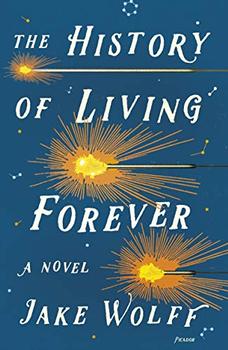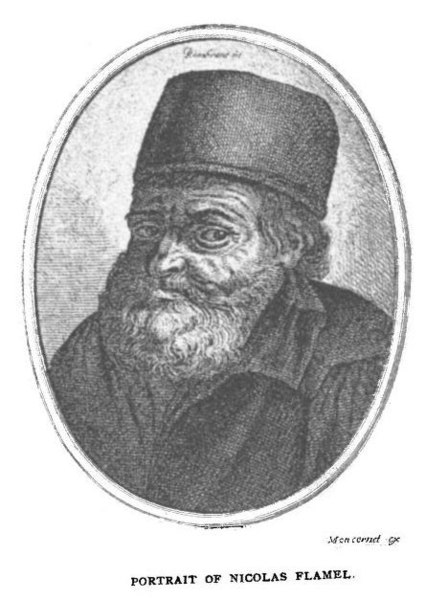Summary | Excerpt | Reviews | Beyond the Book | Read-Alikes | Genres & Themes | Author Bio

Critics' Opinion:
Readers' Opinion:
First Published:
Jun 2019, 384 pages
Paperback:
Sep 2020, 384 pages
 Book Reviewed by:
Book Reviewed by:
Adrienne Pisch
Buy This Book
This article relates to The History of Living Forever
 Since the start of recorded history, as Jake Wolff's debut novel The History of Living Forever makes clear, humans have sought the elixir of life that would confer immortality. The ancient Greeks fantasized about finding ambrosia, the mythical nectar of the gods, said to be sweeter than honey; while the Chinese have eaten Lingzhi, the "mushroom of immortality," for over 2,000 years; and alchemists have sought it for about four millennia.
Since the start of recorded history, as Jake Wolff's debut novel The History of Living Forever makes clear, humans have sought the elixir of life that would confer immortality. The ancient Greeks fantasized about finding ambrosia, the mythical nectar of the gods, said to be sweeter than honey; while the Chinese have eaten Lingzhi, the "mushroom of immortality," for over 2,000 years; and alchemists have sought it for about four millennia.
Mysterious and secretive, alchemists mainly aimed to transform lead into gold, believing the former to be a spiritually and physically immature form of the latter. In the Middle East and Europe, this practice went hand in hand with the search for the elixir of life, which has gone by a number of names including the Philosopher's Stone (brought into the spotlight again with the Harry Potter series). The elixir of life supposedly could heal disease, extend life spans, and transform base metals into precious metals such as gold, making its discovery incredibly appealing to alchemists across the world.
One such alchemist was Nicolas Flammel, a French librarian who lived between 1330 and 1418. Flammel supposedly created the much sought after Philosopher's Stone with his wife. Throughout the next several centuries alchemists claimed to have met Nicolas Flammel in a secret underground laboratory in the Paris catacombs, where allegedly he continued to perfect the elixir of life away from the greed of the outside world.
Western alchemy is believed to have got its start in Egypt around 1900 BCE. It then spread to Greece in 332 BCE, when Alexander the Great conquered Egypt. The word alchemy derives initially from "Al khem," which is Arabic for "the black land." That phrase refers to the fertility of the Nile and the seasonal regeneration of life. When Greek philosophers practiced alchemy, they inserted their worldview of the four elements: earth, water, air and fire. They called alchemy "Khemia," which is the ancient Greek word for Egypt. Alexandria was considered a great center of alchemy, but it is believed that many of the alchemical manuscripts were lost when its famous library burned in 391 CE.
Alchemy arrived in Western Europe in the 8th century with the Arab invasion of Spain and spread to Northern Europe soon after. By the 16th century, European alchemists had split into two groups. One group focused on the discovery of new compounds and reactions, and are the direct forebears of today's chemical scientists. The other focused on the spiritual and metaphysical aspects of alchemy, continuing the search for immortality and the transmutation of base metals into gold.
Alchemy in China appears to have developed independently of the West, with the concept of an inner and outer alchemy. Internal alchemy refers to the practice of exercise or spiritualism that enhances the effects of the outer alchemy--an elixir made of minerals, metals, and other natural substances, heated up and compounded in a crucible.
Qin Shi Huang, the first emperor of China (also remembered for the terracotta army surrounding his tomb), is one of the most famous hunters of the elixir of life. In 2002, writings were discovered which included a decree by the Emperor to search all corners of his empire for immortality potions. Ironically, the search led him to drink cinnabar (mercury sulfide), which, like other forms of mercury, is poisonous. It is said that his tomb is encircled with rivers of mercury. Although the tomb is yet to be excavated, soil samples from the area have found elevated mercury levels.
Nowadays, research into aging and immortality is ongoing. In 2015, Russian scientists injected mice with 3.5 million-year-old bacteria, claiming that it successfully prolonged their lives and allowed them to reproduce as though they were much younger. Biology labs across the world attempt to prolong lifespans and reduce the cellular effects of aging. One such field pursues telomeres: the ends of chromosomes, which shorten with aging. Telomerase is a protein thought to prevent aging by preventing telomere degradation, and preliminary effects in animal trials are promising. Some believe that these trials could eventually lead to centuries of lifespan. Alternatively, with technological advances ongoing, 3D-printed organs or computers to hold our consciousness might provide an alternative to making our bodies last longer. Regardless of methodology, extending lifespans raises many concerns including overpopulating the world, the state of health one might experience, and how to fill all those centuries.
Until then, the hunt for immortality continues.
Filed under Medicine, Science and Tech
![]() This "beyond the book article" relates to The History of Living Forever. It originally ran in July 2019 and has been updated for the
September 2020 paperback edition.
Go to magazine.
This "beyond the book article" relates to The History of Living Forever. It originally ran in July 2019 and has been updated for the
September 2020 paperback edition.
Go to magazine.





The House on Biscayne Bay
by Chanel Cleeton
As death stalks a gothic mansion in Miami, the lives of two women intertwine as the past and present collide.

The Flower Sisters
by Michelle Collins Anderson
From the new Fannie Flagg of the Ozarks, a richly-woven story of family, forgiveness, and reinvention.

The Funeral Cryer by Wenyan Lu
Debut novelist Wenyan Lu brings us this witty yet profound story about one woman's midlife reawakening in contemporary rural China.
Your guide toexceptional books
BookBrowse seeks out and recommends the best in contemporary fiction and nonfiction—books that not only engage and entertain but also deepen our understanding of ourselves and the world around us.